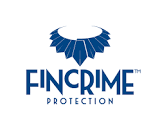In the exciting world of the financial sector, where fortunes are made and lost, and the landscape is ripe with opportunities and risks, banks serve as prominent institutions, bridging the gap between capital and commerce. However, lurking both externally and internally are profound risks associated with money laundering and financial crimes.
In this article, we set the scene through the similar roles undertaken by our fictional family and the regulated financial institution and the measures that must be undertaken to combat these pervasive threats through our unique lens.
Parents
Board and senior management
In our analogy, the board and senior management form the parental figures, establishing the family’s values and instilling a strong culture of compliance within the financial institution. Just as parents’ guide their children, so the board and senior management provide leadership, set expectations, and develop risk appetite statements that guide the policies and procedures to ensure adherence to anti-money-laundering (AML) and financial crime prevention measures.
They understand the importance of creating a compliant environment that fosters integrity, transparency, and ethical behavior. The board and senior management establish the foundation for the institution’s compliance efforts by setting a strong tone from the top.
Children
Staff
Through their compliant actions, the staff members embody the children within our fictional family. We’re not saying employees are somehow less savvy or child-like. We’re speaking more about the task that executive leadership has over the ethical and conduct-oriented direction of the business.
The staff are the backbone of the institution’s operations, entrusted with implementing and upholding AML and financial crime compliance measures through robust procedures and controls. Just as children learn and grow under the guidance of their parents, the staff undergo continuous training and education to understand the intricacies of detecting and preventing financial crimes.
Moreover, the team is empowered to play an active role in compliance. They are encouraged to raise concerns, report suspicious activities, and contribute to improving compliance controls. By fostering a sense of ownership and accountability, the institution ensures that every staff member is committed to upholding the highest compliance standards.
Family estate
Financial institution
In our analogy, the family’s estate symbolises the financial institution — a custodian of the family’s wealth, mirroring its role in the financial sector. The institution is a gateway for financial transactions and services, handling vast amounts of money daily. Consequently, it becomes an attractive target for money launderers and economic criminals. To safeguard the family’s wealth and maintain the institution’s integrity, comprehensive AML and financial crime compliance measures must be in place.
The institution implements robust Know Your Customer (KYC) procedures, conducts thorough due diligence, and monitors transactions to identify and prevent suspicious activities. Additionally, the institution invests in advanced technologies and employs a skilled workforce to strengthen its defences against financial crime risks.
Family values
Fostering a compliance culture
Just as families still have a sense of right and wrong, the financial institution nurtures a compliance culture. The board and senior management work tirelessly to foster an environment prioritising ethical behaviour, regulatory compliance, and a proactive stance against financial crimes. The institution promotes a culture where compliance is not viewed as a burden but as an integral part of business.
Comprehensive training programs are developed to ensure all staff members understand their role in combating money laundering and financial crimes. Regular communication and awareness campaigns reinforce the institution’s commitment to compliance and empower the staff to be vigilant and proactive in detecting and reporting suspicious activities.
Moreover, the institution encourages an open-door policy, fostering a culture where staff members feel comfortable seeking guidance and reporting concerns without fear of reprisal. This enables a collective effort to uphold compliance standards and creates an atmosphere where everyone is responsible for maintaining the institution’s integrity.
Family gatherings
Collaboration and information sharing
Family gatherings foster unity and collaboration. Similarly, collaboration and information sharing are essential components of effective AML and financial crime compliance efforts within the financial institution. The institution actively engages with regulatory bodies, industry associations, and law enforcement agencies to stay abreast of the latest regulatory developments, emerging risks, and best practices in the fight against financial crimes.
Collaboration extends beyond external partnerships to internal cooperation as well. Different departments within the institution, such as compliance, risk management, and operations work hand in hand to identify potential vulnerabilities and implement robust controls. Regular meetings, training sessions, and knowledge-sharing initiatives ensure that information flows seamlessly throughout the organisation.
The institution also encourages staff members to participate in industry conferences, workshops, and training programs to enhance their expertise and keep pace with evolving trends in AML and financial crime prevention. By fostering collaboration and information sharing, the institution strengthens its ability to identify and respond effectively to emerging risks and threats.
Family’s canine friend
Alarm and monitoring systems
The family’s canine friend represents the alarm and monitoring systems the financial institution employs. Just as a faithful dog guards the family’s estate, the institution utilises advanced technologies and monitoring tools to protect against financial crime risks. These tools include sophisticated transaction monitoring systems, artificial intelligence algorithms, and data analytics capabilities. They enable the institution to detect patterns, anomalies, and red flags indicating potential money laundering or other illicit activities.
The institution also leverages comprehensive sanction-screening processes to ensure that transactions comply with regulatory requirements and are not associated with sanctioned individuals or entities. Furthermore, the institution regularly updates its systems and employs cutting-edge technologies to stay ahead of the ever-evolving methods used by financial criminals. This continuous improvement allows the institution to adapt to emerging risks and effectively deploy proactive measures to prevent financial crimes.
Conclusion
Just as children’s actions reflect the values and culture instilled by their parents, the staff within the financial sector play a crucial role in upholding AML and financial crime compliance. In our analogy of a family, we recognise their responsibility in safeguarding the institution’s reputation and protecting the interests of its clients. Through collaboration, comprehensive training, effective utilisation of advanced tools, and a strong culture of compliance, the staff becomes the driving force behind the institution’s compliance efforts.
The staff ensures a secure and trustworthy financial sector by embodying a culture of compliance in every aspect of their work. This commitment protects the family’s wealth from financial crime, strengthens the institution’s defences, and promotes a resilient and ethical environment. Together, the staff and the institution form an unbreakable bond, exemplifying the power of compliance in preserving the integrity of the financial sector.
Tyrone Griffiths is an esteemed senior consultant and managing director of FinCrime Protection Limited, specializing in the field of anti money laundering and regulatory compliance.


















